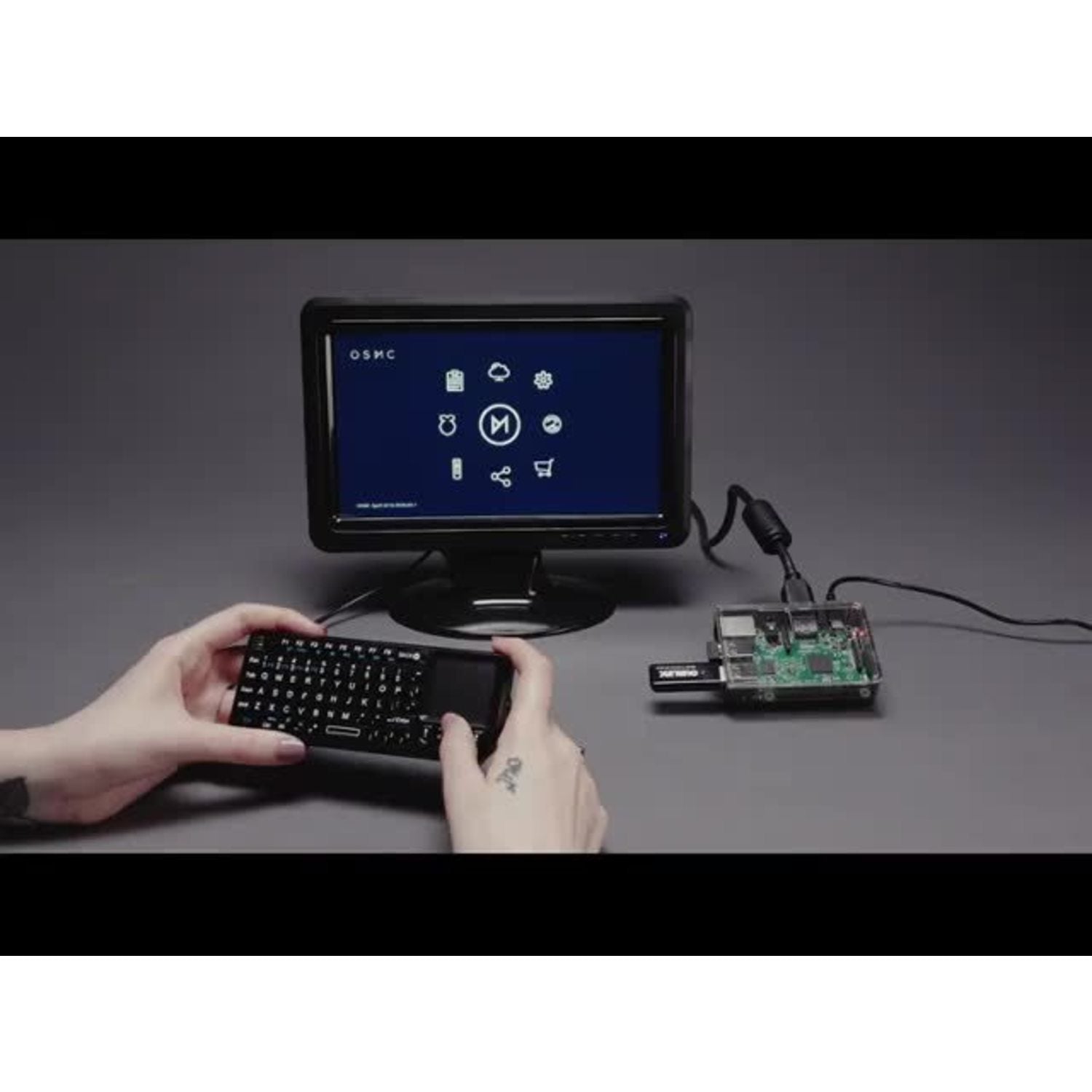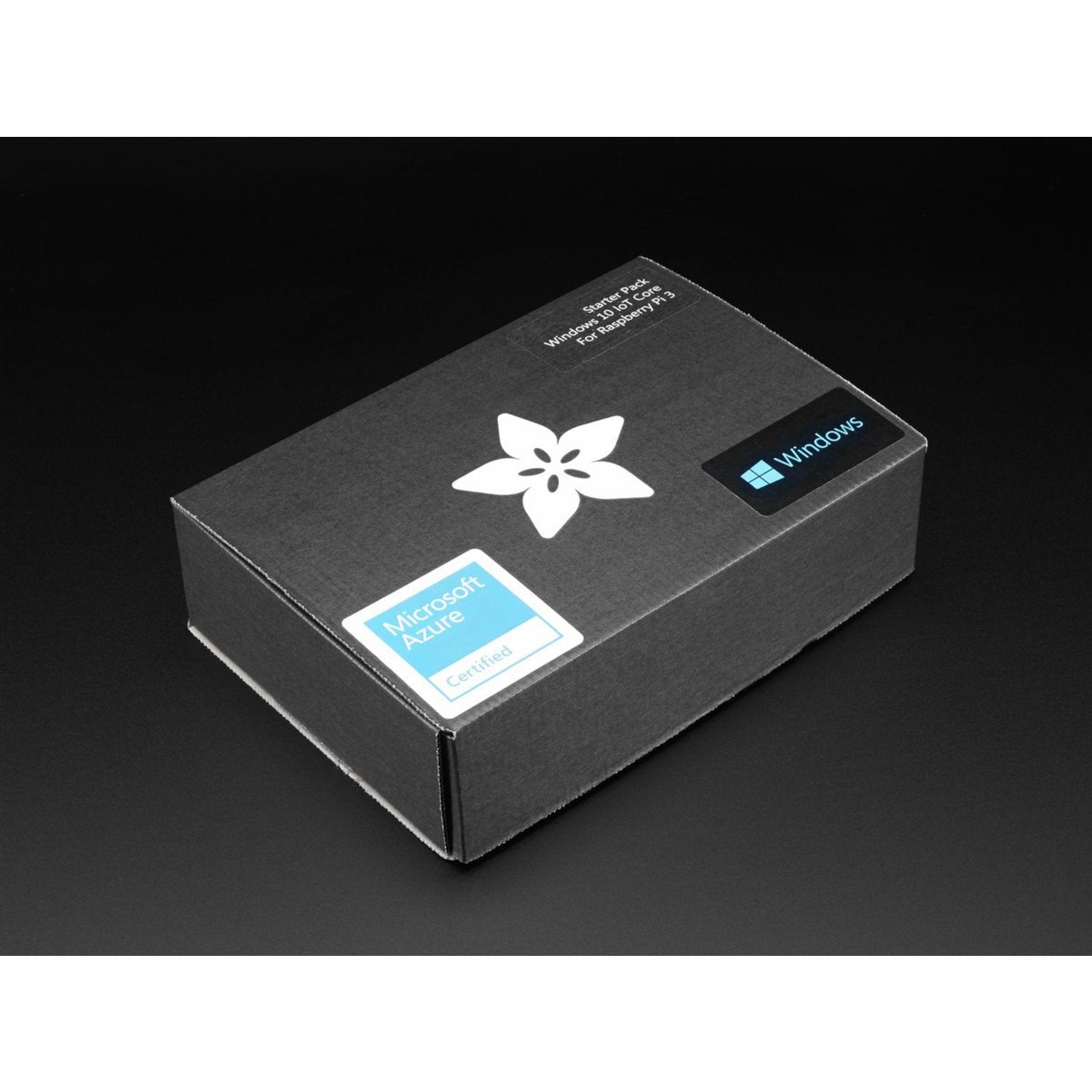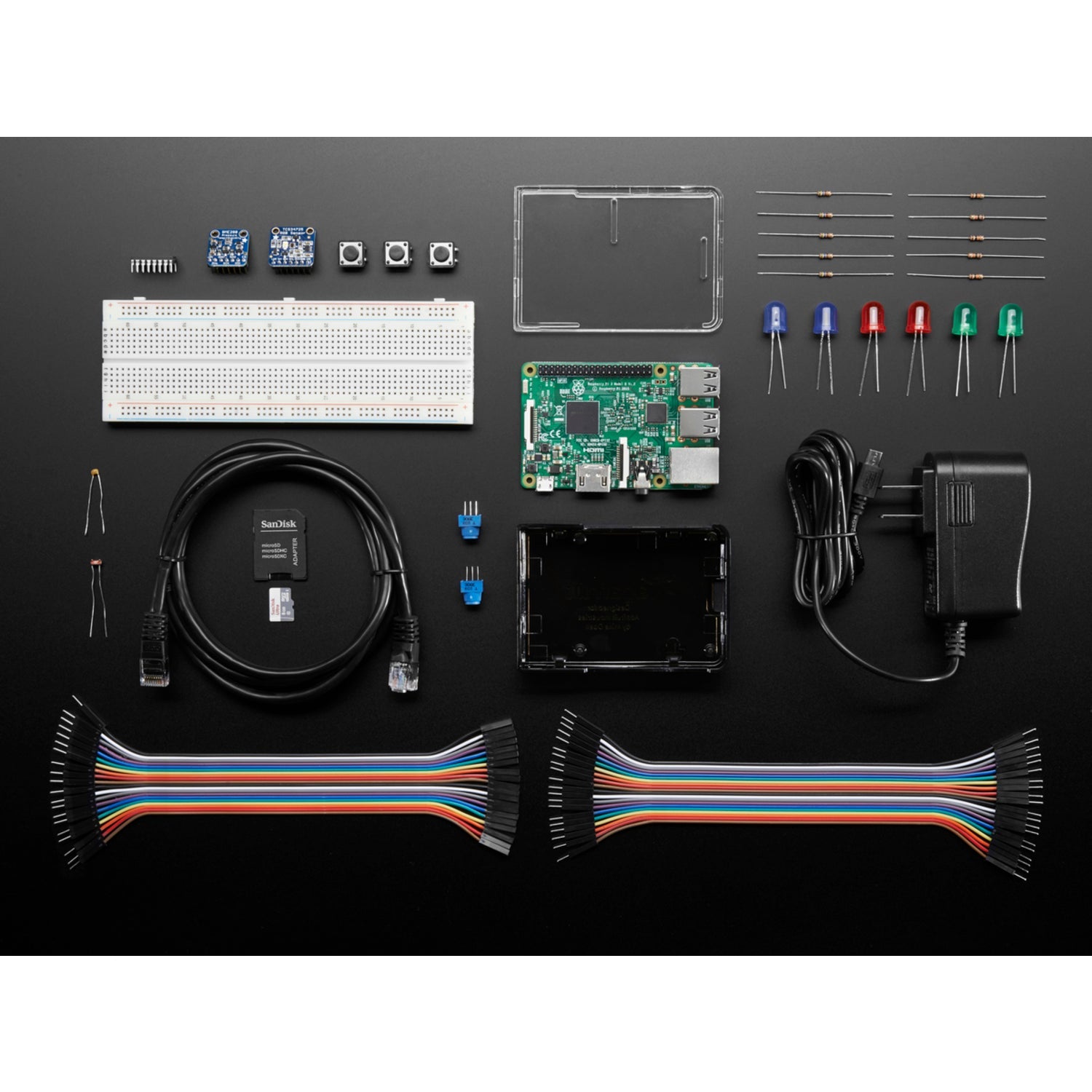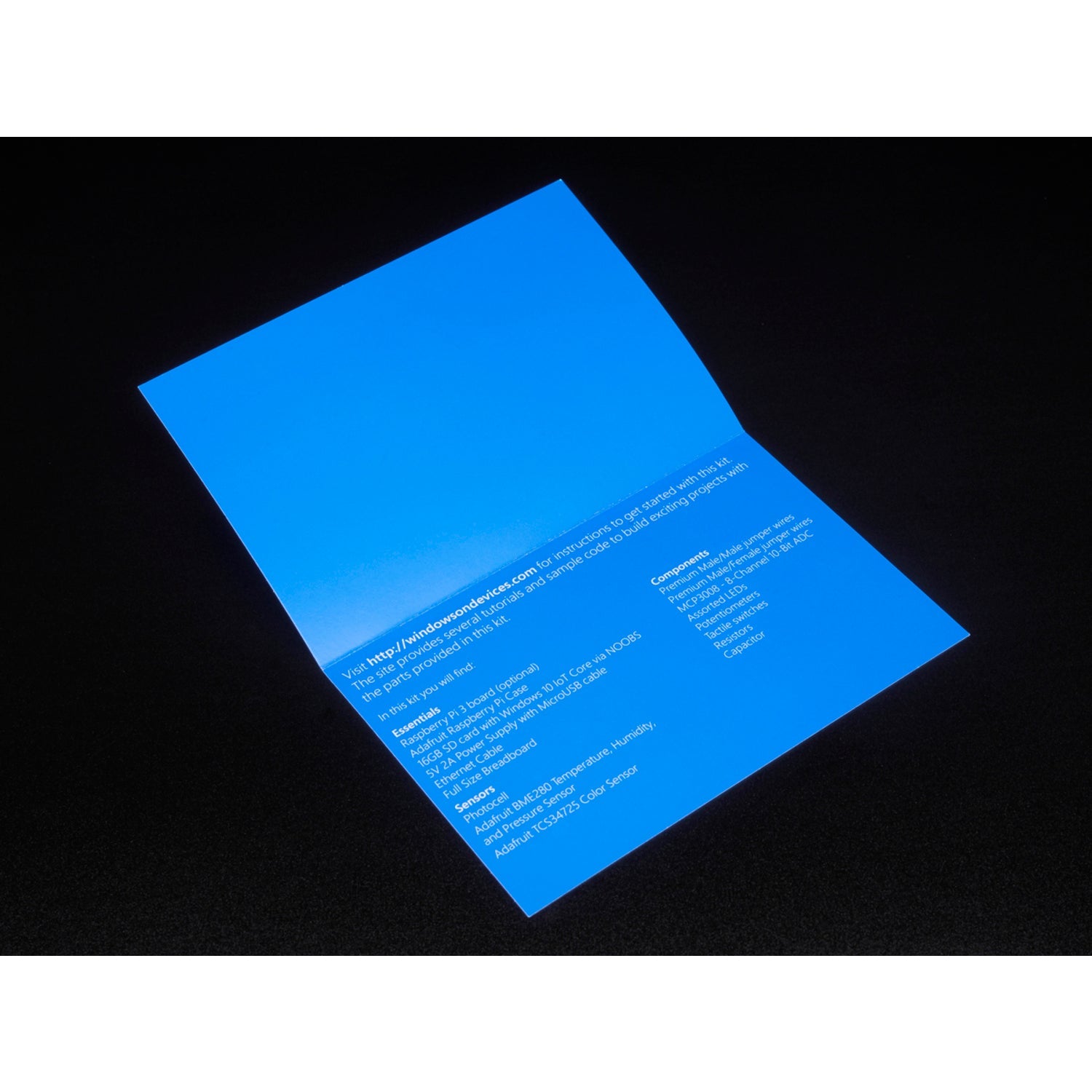The Microsoft Internet of Things Pack for Raspberry Pi 3 is your ultimate gateway to transforming your Raspberry Pi into an IoT - enabled device running Windows 10. A joint effort between Microsoft's IoT team and Adafruit, this pack offers an easy - to - start solution for both using Windows 10 on your Pi and diving into exciting IoT projects. Visit https://developer.microsoft.com/en - us/windows/iot to learn how to set up Windows 10 IoT Core on your Raspberry Pi and get project samples! This pack is certified for use with Microsoft Azure and other compatible Azure - certified operating systems. It comes with a Raspberry Pi 3 Computer. Click here for the version without a Pi. The pack includes an Adafruit Raspberry Pi B+ Case (smoke base, clear top), a full - size breadboard, premium male/male and female/male jumper wires, a 5V 2.5A switching power supply with a 6' MicroUSB cable, assembled Adafruit BME280 temperature, pressure & humidity sensor and TCS34725 RGB color sensor, an MCP3008 8 - channel 10 - bit ADC, a 5 - foot ethernet cable, a 16GB SD/MicroSD memory card pre - loaded with NOOBS that supports Windows 10 on Raspberry Pi 3, and various electronic components like photo cells, resistors, LEDs, and switches. You can also use this pack with Raspbian Linux and Python. Check out some Raspbian - based guides to start your journey, like lighting up an LED on email, playing MP3s on button presses, and detecting light changes with a photo cell sensor.





Using this pack is a breeze. First, take out the Raspberry Pi 3 and place it in the Adafruit case. Connect the power supply to the Pi using the MicroUSB cable. Make sure the power supply is providing the right voltage (5V 2.5A). Then, insert the 16GB SD card with NOOBS into the Pi. This will let you set up Windows 10 or use Raspbian Linux. For wiring, use the male/male and female/male jumper wires to connect components on the full - size breadboard. You can connect sensors like the BME280 and TCS34725 to gather data. The MCP3008 can be used to add analog input channels to your project. As for the electronic components, use them according to your project needs. For example, use the LEDs to create visual indicators and the switches for user input. When it comes to maintenance, keep the components in a dry and clean place. Avoid exposing them to extreme temperatures. If you're not using the Pi for a long time, remove the power supply to save energy. And always handle the components gently to prevent damage.

![MiniPOV 3 Kit [V 3.0]](https://img.freedoshvs.com/usImg/3f/0381e4fa9d4f2d459b1f5d6a6015716b.jpg?BrbDC4pXf9Q)





